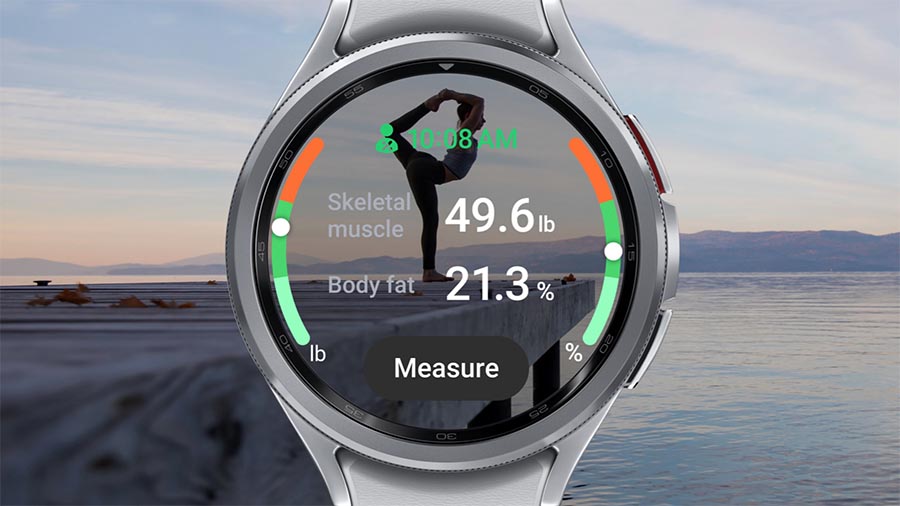The American College of Sports Medicine’s (ACSM) annual survey found wearable technology ranked as the number one fitness trend for the third straight year. The Top 3 trends also included workplace health promotion and fitness programs for older adults.
Wearables technology includes smartwatches, fitness trackers, and heart rate monitors, providing real-time information about pulse, step counts, and sleep. ACSM said wearable technology has not left the Top 3 trends in its survey since 2016, suggesting increased interest in using these tools for community connection and social support.
“We know that social support is one of the strongest predictors of exercise self-efficacy. It is important for exercise professionals to leverage the capabilities of wearable technology to improve adherence and autonomy for clients,” said Trends Co-author and Spokesperson A’Naja Newsome, Ph.D., ACSM-CEP.
In addition to wearable technology, the No. 2 and No. 3 trends tell an interesting story. The No. 2 fitness trend for 2024 is worksite health promotion, which entered the Top 10 for the first time. There is a correlation between employees returning to work in-office post-pandemic and the development of work-related programs and perks that increase employee wellness.
“We are noticing that exercise professionals prioritize health-related outcomes of fitness programs. Due to the COVID-19 pandemic, we are starting to see fitness being used to reduce symptoms of mental illness and to increase health-related quality of life,” said Dr. Newsome.
Fitness programs for older adults, the No. 3 trend, experienced fluctuations influenced by the pandemic and other external factors, including that many Baby Boomers are entering retirement and adopting a lifestyle that focuses on fitness. This trend was No. 9 in 2021, No. 11 in 2022, then moved up to No. 4 in 2023, and No. 3 in 2024.
According to the 2021 Profile of Older Americans, the number of Americans aged 65 and older rose 38 percent between 2010 and 2021. The increase is likely to continue through 2040. Roughly 27 percent of this population lives independently, and regular physical activity is vital to remain healthy and independent.
The survey forecasted the Top 20 global fitness trends for 2024, combined with two surveys, ACSM’s Worldwide Fitness Trends and Fitness Trends from Around the Globe, to provide more wide-ranging but regionally sensitive data. The authors also organized the individual trends into thematic categories: Digital Technology, Exercise Setting, Special Populations, Programming, Fitness Business Model, Medical Fitness, and Training Modality.
According to Dr. Newsome, the intent is that the combined publication and the addition of trend categories would allow readers to understand trends predicted to drive the health and fitness industry here in the U.S. and abroad.
Overall, ACSM said the the top three trends for 2024 “seem to paint a picture of a fitness landscape in which people remain focused on the potential of wearable tech, more employers are considering the benefits of facilitating healthy behaviors in employees and older adults make up an increasing proportion of the population in need of physical activity.”
The Top 10 trends for 2024 include the following:
- Wearable technology, including fitness trackers, smart watches, heart rate monitors, and GPS tracking devices, including tech that can monitor heart rate, calories, sitting time, sleep, and more.
- Worksite health promotion—work-related programs and perks that increase employee wellness. (First time in the Top 10)
- Fitness programs for older adults—focused on the unique needs of the aging population.
- Exercise for weight loss—dieting and culinary interventions alongside an exercise routine.
- Reimbursement for qualified exercise professionals (QEPs)—policy changes that would allow exercise professionals to bill insurance companies more easily.
- Employing certified health and fitness professionals who have completed educational programs and fully accredited health/fitness certifications.
- Mobile exercise apps, including smartphones and related applications that aid in exercise performance or programming. (First time in the Top 10)
- Improving mental well-being through physical activity. (First time in the Top 10)
- Youth athletic development—Engaging young people in sports and related activities. (First time in the Top 10)
- Personal training, including goal setting, fitness assessment and exercise programming with a trainer in one-on-one settings.
To read the Top 20 trends, go here.
Image courtesy of Samsung
ACSM’s annual survey is included in the 2024 ACSM Worldwide Fitness Trends: Future Directions of the Health and Fitness Industry, published in the January/February issue of ACSM’s Health & Fitness Journal. Since 2006, the ACSM Worldwide Fitness Trends survey has gathered input from 2,000 clinicians, researchers, and practitioners in the fitness industry. It is designed to provide input on fitness trends instead of “fads” that have little or no impact on the industry.
















